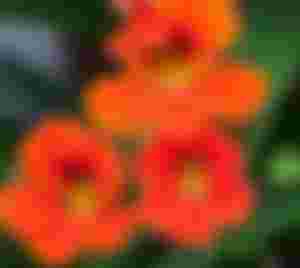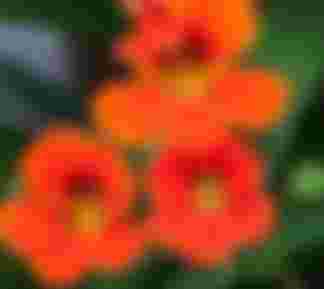The nasturtium plant, also called dagger or nasturtium, is a herbaceous plant, and it is a member of the Nasturtium family, which is distinguished by its broad leaves and colorful flowers. It has many benefits, including that it is an important source of vitamin C and is considered an antioxidant, anti-bacterial and anti-fungal.

What is nasturtium?
Nasturtium is a multi-colored annual herbaceous plant. It can be grown in gardens and balconies throughout spring and summer, but it does not tolerate cold and frost in winter.
The nasturtium plant can be grown in regular soil and does not need to be fertilized. On the contrary, fertilizers cause harm to it and stop its growth and may destroy it.
Description of the nasturtium plant
Nasturtium is a herbaceous plant that has large, bright flowers and large leaves, and is distinguished by its many colors.
When describing the Nasturtium plant, it is divided as follows:
Leaves: green, pale in color, ribbed, edible and tart.
Flowers: Funnel shaped, edible, bitter taste and can be used to decorate dishes.
Seeds: They are also edible and can be eaten in the form of pickles by placing them in water and salt.
Places of occurrence of the nasturtium plant
It grows naturally on the banks of rivers in areas of western South America.
It was brought by the Spanish in the sixteenth century, and spread to most of the northern part of the globe.
A Swedish scientist by the name of Carl Linnaeus described it as having leaves resembling shields and red flowers resembling bloodstained helmets.
How to grow nasturtium at home
Certain types of nasturtium that you can grow at home are creamy, yellow, red, and orange with dark spots.
They are easy to grow when they have good sunlight, as they need dry soil to bloom well.
Nasturtium can be grown as shrubs and used to cover fences and trellises.
Uses of the nasturtium plant
Nasturtium can be used in salads as small greens, as well as on pizza, sandwiches, and cake decorating.
Nasturtium is used to brew a moisturizing herbal tea and as a good source of many nutrients.
Abu Dagger seeds can be combined with vinegar and make a refreshing spice that can be applied to food.
It can be used as a substitute for mustard or watercress in food, as it tastes tart.
Nasturtium in traditional medicine
Nasturtium was used in traditional medicine in the 15th century in South America as a medicinal herb rich in antioxidants.
Some have used it by putting it in tea and using it to soothe sore throats and colds.
Its seeds have been used as a natural antibiotic for internal infections.
It could also be used to treat urinary tract infections.
Benefits of the nasturtium plant
Recent research has confirmed that the nasturtium plant contains antioxidants and a group of vitamins and bio-active compounds that help support the immune system, digestive system and respiratory system, as:
The nasturtium blossoms are rich in vitamin C, containing about 130 milligrams of vitamin C per 3.5 ounce serving, which is a similar amount to parsley.
Nasturtium is a good source of essential nutrients including potassium, phosphorous, magnesium, calcium, manganese, copper, zinc and iron.
These plants are distinguished by their rapid supply of lutein, containing 45 mg of lutein per 100 grams, making them among the highest in any edible herbaceous plant.
They are high in compounds like anthocyanins and polyphenols, which make them useful for treating conditions that affect the respiratory and digestive systems.
The nasturtium plant contains erosic acid, which is a type of omega-9 fatty acid that contains natural lubricants. It is used in the treatment of skin diseases that affect the skin and hair, as it is rich in moisturizing elements.
It is also possible to extract the essential oil from the nasturtium plant, as it is considered an anti-bacterial and anti-fungal, antihypertensive, expectorant, anti-inflammatory and anti-cancer.
The leaves of the nasturtium plant contain natural antibiotics that help many people treat respiratory diseases, congestion, coughs, bronchitis and colds.
Nasturtium is a diuretic and metabolism booster.
Nasturtium leaves are anti-rheumatic, anti-gout, and are also used to remove freckles.
Nasturtium leaves also help eliminate worms in the stomach.

Nasturtium is a herbal plant rich in vitamin C, antioxidants and natural antibiotics that make it easy to treat many diseases.

